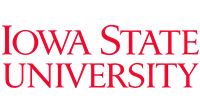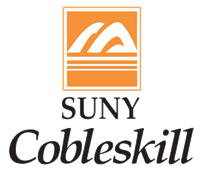What do they do?
Diagnose, adjust, repair, or overhaul farm machinery and vehicles, such as tractors, harvesters, dairy equipment, and irrigation systems.
Also known as:
Agricultural Mechanic, Agricultural Technician, Agriculture Mechanic, Farm Equipment Mechanic, Farm Equipment Service Technician, Farm Equipment Technician, Field Technician, Harvester Mechanic, Mechanic, Service Technician, Shop Mechanic, Tractor Mechanic, Tractor Technician
-
7.6%
Change
Ranks #41 in job growth rate160Job Openings
Ranks #12 in net job growth
-
Reedley College
Reedley, CA
-
University of Northwestern Ohio
Lima, OH
-
California Polytechnic State University-San Luis Obispo
San Luis Obispo, CA
-
Iowa State University
Ames, IA
-
Navarro College
Corsicana, TX
Looking for colleges that offer a specific major? Use the College Match Tool to find your best-matched schools and discover your estimated Net Price!
- Doctorate or Professional Degree (<1%)
- Master's degree (1%)
- Bachelor's degree (4%)
- Associate's degree (13%)
- Some college, no degree (24%)
- High school diploma equivalent (47%)
- Less than high school diploma (11%)
Most Popular Majors that prepare Farm Equipment Mechanics and Service Technicians
-
#1
-
Degrees Granted
441
-
Female Students
29
-
Male Students
412
-
Median Starting Salary
$40,800
-
-
#2
-
Degrees Granted
101
-
Female Students
3
-
Male Students
98
-
Median Starting Salary
$40,800
-
-
#3
-
Degrees Granted
25
-
Female Students
4
-
Male Students
21
-
Median Starting Salary
$40,800
-
People in this career often have these skills:
- Equipment Maintenance - Performing routine maintenance on equipment and determining when and what kind of maintenance is needed.
- Repairing - Repairing machines or systems using the needed tools.
- Troubleshooting - Determining causes of operating errors and deciding what to do about it.
- Operation and Control - Controlling operations of equipment or systems.
- Critical Thinking - Using logic and reasoning to identify the strengths and weaknesses of alternative solutions, conclusions, or approaches to problems.
- Operations Monitoring - Watching gauges, dials, or other indicators to make sure a machine is working properly.
- Quality Control Analysis - Conducting tests and inspections of products, services, or processes to evaluate quality or performance.
People in this career often know a lot about:
- Mechanical - Knowledge of machines and tools, including their designs, uses, repair, and maintenance.
- Customer and Personal Service - Knowledge of principles and processes for providing customer and personal services. This includes customer needs assessment, meeting quality standards for services, and evaluation of customer satisfaction.
- Computers and Electronics - Knowledge of circuit boards, processors, chips, electronic equipment, and computer hardware and software, including applications and programming.
- English Language - Knowledge of the structure and content of the English language including the meaning and spelling of words, rules of composition, and grammar.
People in this career often have talent in:
- Manual Dexterity - The ability to quickly move your hand, your hand together with your arm, or your two hands to grasp, manipulate, or assemble objects.
- Control Precision - The ability to quickly and repeatedly adjust the controls of a machine or a vehicle to exact positions.
- Multilimb Coordination - The ability to coordinate two or more limbs (for example, two arms, two legs, or one leg and one arm) while sitting, standing, or lying down. It does not involve performing the activities while the whole body is in motion.
- Finger Dexterity - The ability to make precisely coordinated movements of the fingers of one or both hands to grasp, manipulate, or assemble very small objects.
- Arm-Hand Steadiness - The ability to keep your hand and arm steady while moving your arm or while holding your arm and hand in one position.
- Problem Sensitivity - The ability to tell when something is wrong or is likely to go wrong. It does not involve solving the problem, only recognizing that there is a problem.
- Visualization - The ability to imagine how something will look after it is moved around or when its parts are moved or rearranged.
- Near Vision - The ability to see details at close range (within a few feet of the observer).
- Oral Comprehension - The ability to listen to and understand information and ideas presented through spoken words and sentences.
- Deductive Reasoning - The ability to apply general rules to specific problems to produce answers that make sense.
- Static Strength - The ability to exert maximum muscle force to lift, push, pull, or carry objects.
People in this career often do these activities:
- Repair defective engines or engine components.
- Service vehicles to maintain functionality.
- Disassemble equipment for maintenance or repair.
- Maintain repair or maintenance records.
- Test mechanical equipment to ensure proper functioning.
- Reassemble equipment after repair.
- Adjust equipment to ensure optimal performance.
- Clean equipment, parts, or tools to repair or maintain them in good working order.
- Lubricate equipment to allow proper functioning.
- Test electrical circuits or components for proper functioning.
- Install machine or equipment replacement parts.
- Adjust vehicle components according to specifications.
- Read work orders or descriptions of problems to determine repairs or modifications needed.
- Inspect mechanical equipment to locate damage, defects, or wear.
- Confer with customers or users to assess problems.
- Replace worn, damaged, or defective mechanical parts.
- Repair worn, damaged, or defective mechanical parts.
- Move large objects using heavy equipment.
- Fabricate parts or components.
- Repair structural components.
- Calculate costs of goods or services.
- Install piping for installation or maintenance activities.
- Repair pipes to stop leaking.
This page includes data from:

 Occupation statistics: USDOL U.S. Bureau of Labor Statistics Occupational Employment Statistics
Occupation statistics: USDOL U.S. Bureau of Labor Statistics Occupational Employment Statistics









